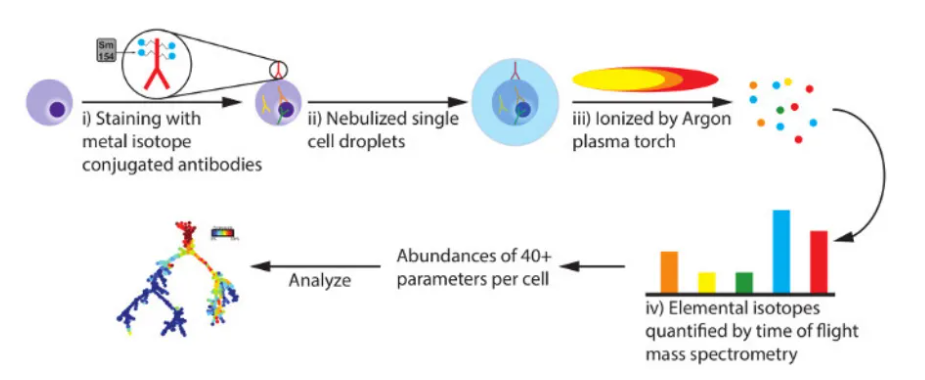Single Cell Mass Cytometry Analysis
With the advancement of modern biology, the term "average" no longer satisfies our research needs. We need to delve deeper into the differences between individual cells, leading to the emergence of various single-cell research technologies. Single-cell mass cytometry employs mass spectrometry to perform multi-parameter detection on individual cells, combining the high-throughput analysis capabilities of traditional flow cytometry with the high resolution of mass spectrometry detection. Both single-cell sequencing and mass cytometry are currently very powerful techniques, and more and more high-impact publications are using a combination of the two, with no superiority between them. The difference lies in that mass cytometry targets proteins, allowing for the detection of specified proteins, avoiding the omission of low-abundance yet important proteins, and due to its high throughput, it can analyze a large number of cells, complementing single-cell sequencing well. MtoZ Biolabs' single-cell mass cytometry technology utilizes metal element markers (typically metal-labeled specific antibodies) to label molecules on the cell surface and inside, then separates individual cells using flow cytometry principles, followed by analysis of the atomic mass spectrum of each cell using inductively coupled plasma mass spectrometry (ICP-MS), and finally converting the atomic mass spectrum data into the expression levels of signal molecules on the cell surface and inside.

McCarthy, R. L. et al. J. Vis. Exp. 2017.
Figure 1. Single-Cell Mass Cytometry Technology
Service Advantages
Analysis Workflow
Uses the Fluidigm mass cytometry system for sample analysis
1. Experimental Design
2. Sample Preparation
3. Data Acquisition
4. Data Analysis
Applications
Functional analysis that can be performed with mass cytometry can be divided into 12 categories:
1. Phenotypic Characterization
2. Intracellular Cytokine Determination
3. Intracellular Signaling Status Characterization
4. Cell Volume and Size Measurement
5. Cell Vitality Identification
6. Cell Cycle Identification
7. Proliferation Tracing
8. Receptor Occupancy Determination
9. T-cell Screening Based on Tetramers
10. Chromatin Modification Analysis
11. Co-detection of RNA and Proteins
12. Imaging Mass Cytometry
How to order?







